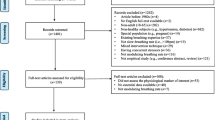Summary
During and after performances of 50, 100, 150 and 200 watts in 45 healthy male subjects the heart rate was continuously measured. Between the recovery pulse rate and the heart rate during exercise the coefficients of correlation, the equations of the regression lines and the coefficients of variation were determined. 15–30 sec following exercise the correlations are tight. With the increase of the duration of recovery the coefficients of correlation decrease. In a range of 50–200 watts the values of the coefficients of correlation are independent on the work load. The curve of the recovery pulse rate can be described by summarizing two exponential functions. During the first phase the velocity of recovery measured by the recovery constants and the half time constants is smaller in higher work loads and therefore higher exercise heart rates.
Zusammenfassung
An 45 gesunden männlichen Versuchspersonen wurde während und nach Leistung von 50, 100, 150 und 200 W die Herzfrequenz fortlaufend registriert. Zwischen dem Erholungspuls zu bestimmten Zeitpunkten der Erholungsphase und der Herzfrequenz während der Arbeitsleistung wurden die Korrelationskoeffizienten, die Gleichungen der Regressionsgeraden, deren Standardabweichungen und die Variabilitätskoeffizienten bestimmt. 15–30 sec nach Arbeitsleistung ist die Korrelation sehr straff. Die Schätzung der Herzfrequenz während der Leistung aus der Erholungspulsfrequenz ist mit einem geringen Fehler behaftet. Mit zunehmender Erholungsdauer werden die Beziehungen rasch weniger straff. Im Bereich von 50–200 W ist die Höhe der Korrelationskoeffizienten vermutlich unabhängig von der Leistung. Der Verlauf der Herzfrequenz während der Erholungsphase wird durch die Summe zweier Exponentialfunktionen beschrieben. Die Erholungsgeschwindigkeit in der ersten Phase der Erholung ist, gemessen an der Restitutionskonstanten und der Halbwertzeit, bei größerer Leistung und damit höherer Herzfrequenz geringer.
Similar content being viewed by others
Literatur
Bassan, L.: Über die Aussagekraft der Herzschlagfrequenz als physiologische Meßgröße in der Leistungsphysiologie (radiotelemetrische Untersuchungen). Verh. dtsch. Ges. exp. Med.14, 131 (1966).
Bühlmann, A.: Probleme der Ergometrie in Theorie und Praxis; zit. n. G.Hansen: Bericht über 1. Internationales Seminar für Ergometrie. Sportarzt und Sportmedizin17, 156 (1966).
Fleisch, A.: Neue Methoden zum Studium des Gesaustausohes und der Lungenfunktion. 1. Aufl. Leipzig: Thieme 1956.
Galletti, P. M., P. Haab etA. Fleisch: Analyse formelle des courbes d'adaptation et de récupération de la ventilation lors de l'exercise musculaire. Helv. physiol. pharmacol. Acta14, C 20 (1956).
Gupta, K. K., U. M. Rao, andB. Krishan: Value of recovery pulse as an index of physical fitness. Ind. J. med. Res.48, 613 (1960).
Hill, A. V., C. N. H. Lang, andH. Lupton: Musculare exercise, lactic acid and the supply and utilization of oxygen. Proc. roy. Soc. B97, 84 (1925).
Knehr, C. H., D. B. Dill, andW. Neufeld: Training and its effects on man at rest and at work. Amer. J. Physiol.136, 148 (1942).
Margaria, R., H. T. Edwards, andD. N. Dill: The possible mechanism of contracting and paying of oxygen debt on the role of lactic acid in muscular contraction. Amer. J. Physiol.106, 689 (1933).
—,A. Taglietti, E. Agostoni eG. Milic-Emili: Cinetica del ritorno ai valori di riposo della frequenza cardiaca e della ventilazione polmonare dopo lavoro muscolare. Atti. Accad. naz. Lincei20, 739 (1956).
McArdle, W. D., G. F. Foglio, andA. V. Patti: Telemetered cardiac response to selected running events. J. appl. Physiol.23, 566 (1967).
Milic-Emili, G.: Heart-rate and ventilation during recovery from heavy exercise in trained and untrained individuals. Int. Z. angew. Physiol.17, 455 (1959).
Müller, E. A., u.J. J. Reeh: Die fortlaufende Registrierung der Pulsfrequenz bei beruflicher Arbeit. Arbeitsphysiologie14, 137 (1950).
Norman, L. W.: Unpublished report to Canadian Association of Health, Physical education and recreation. Fredericton New Brunswick 1965; zit. n. R. J.Shephard.
Ryhming, J.: A modified Harvard step test for the evaluation of physical fitness. Arbeitsphysiologie15, 235 (1953).
Shephard, R. J.: The prediction of maximum oxygen intake from post-exercise pulse readings. Int. Z. angew. Physiol.24, 31 (1967).
Simonson, E.: Zur Physiologie des Energieumsatzes beim Menschen. Pflügers Arch. ges. Physiol.215, 716 (1927).
Taylor, C.: Some properties of maximal and sub-maximal exercise with reference to physiological variation and the measurement of exercise tolerance. Amer. J. Physiol.142, 200 (1944).
Author information
Authors and Affiliations
Rights and permissions
About this article
Cite this article
Millahn, H.P., Helke, H. Über Beziehungen zwischen der Herzfrequenz während Arbeitsleistung und in der Erholungsphase in Abhängigkeit von der Leistung und der Erholungsdauer. Int. Z. Angew. Physiol. Einschl. Arbeitsphysiol. 26, 245–257 (1968). https://doi.org/10.1007/BF00695113
Received:
Issue Date:
DOI: https://doi.org/10.1007/BF00695113




